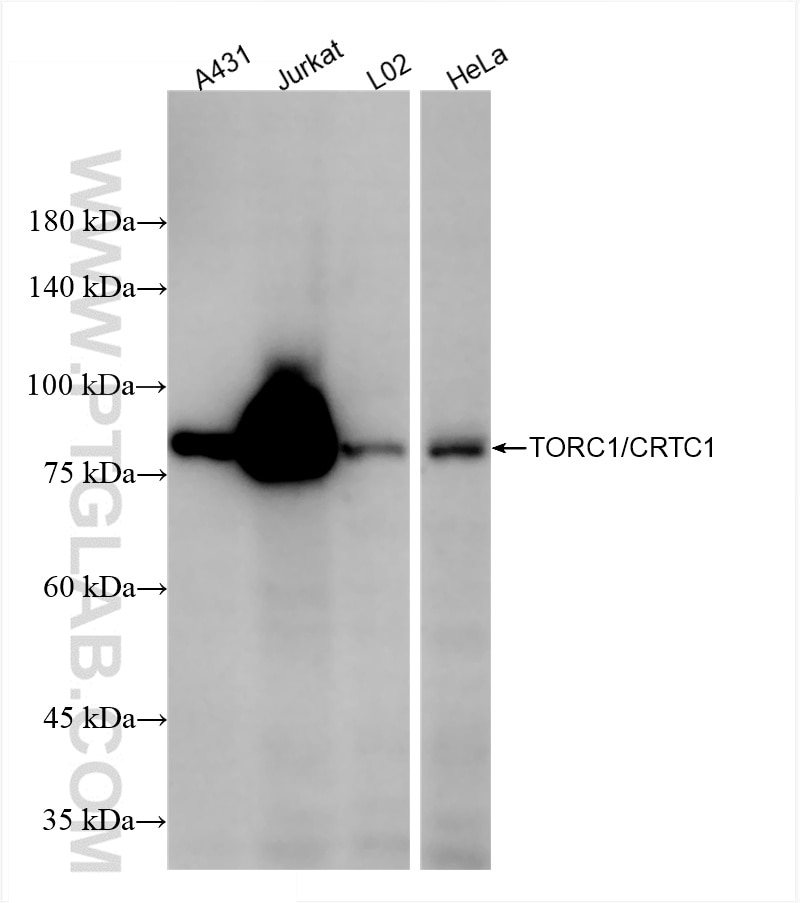Anticorps Recombinant de lapin anti-TORC1/CRTC1
TORC1/CRTC1 Recombinant Antibody for WB, Indirect ELISA
Hôte / Isotype
Lapin / IgG
Réactivité testée
Humain
Applications
WB, Indirect ELISA
Conjugaison
Non conjugué
CloneNo.
250870G10
N° de cat : 86226-3-PBS
Synonymes
Galerie de données de validation
Informations sur le produit
86226-3-PBS cible TORC1/CRTC1 dans les applications de WB, Indirect ELISA et montre une réactivité avec des échantillons Humain
| Réactivité | Humain |
| Hôte / Isotype | Lapin / IgG |
| Clonalité | Recombinant |
| Type | Anticorps |
| Immunogène | TORC1/CRTC1 Protéine recombinante Ag0693 |
| Nom complet | CREB regulated transcription coactivator 1 |
| Masse moléculaire calculée | 75 kDa |
| Poids moléculaire observé | 68-80 kDa |
| Numéro d’acquisition GenBank | BC028050 |
| Symbole du gène | CRTC1 |
| Identification du gène (NCBI) | 23373 |
| Conjugaison | Non conjugué |
| Forme | Liquide |
| Méthode de purification | Purification par protéine A |
| Tampon de stockage | PBS only |
| Conditions de stockage | Store at -80°C. 20ul contiennent 0,1% de BSA. |
Informations générales
CRTC1, also named as MECT1,TORC1, and WAMTP1, belongs to the TORC family. It is a transcriptional coactivator for CREB1 which activates transcription through both consensus and variant cAMP response element (CRE) sites. CRTC1 acts as a coactivator, in the SIK/TORC signaling pathway, being active when dephosphorylated and acts independently of CREB1 'Ser-133' phosphorylation. It enhances the interaction of CREB1 with TAF4. CRTC1 regulates the expression of specific CREB-activated genes such as the steroidogenic gene, StAR. It is a potent coactivator of PGC1alpha and inducer of mitochondrial biogenesis in muscle cells. CRTC1 is also a coactivator for TAX activation of the human T-cell leukemia virus type 1 (HTLV-1) long terminal repeats (LTR). In the hippocampus, CRTC1 involved in late-phase long-term potentiation (L-LTP) maintenance at the Schaffer collateral-CA1 synapses. It may be required for dendritic growth of developing cortical neurons. CRTC1 has some isoforms produced by alternative splicing with MW of 67 kDa, 68 kDa and 62 kDa. Sometimes it appears as a 75-80 kDa band probably due to phosphorylation (PMID: 17183642; 22770221)





